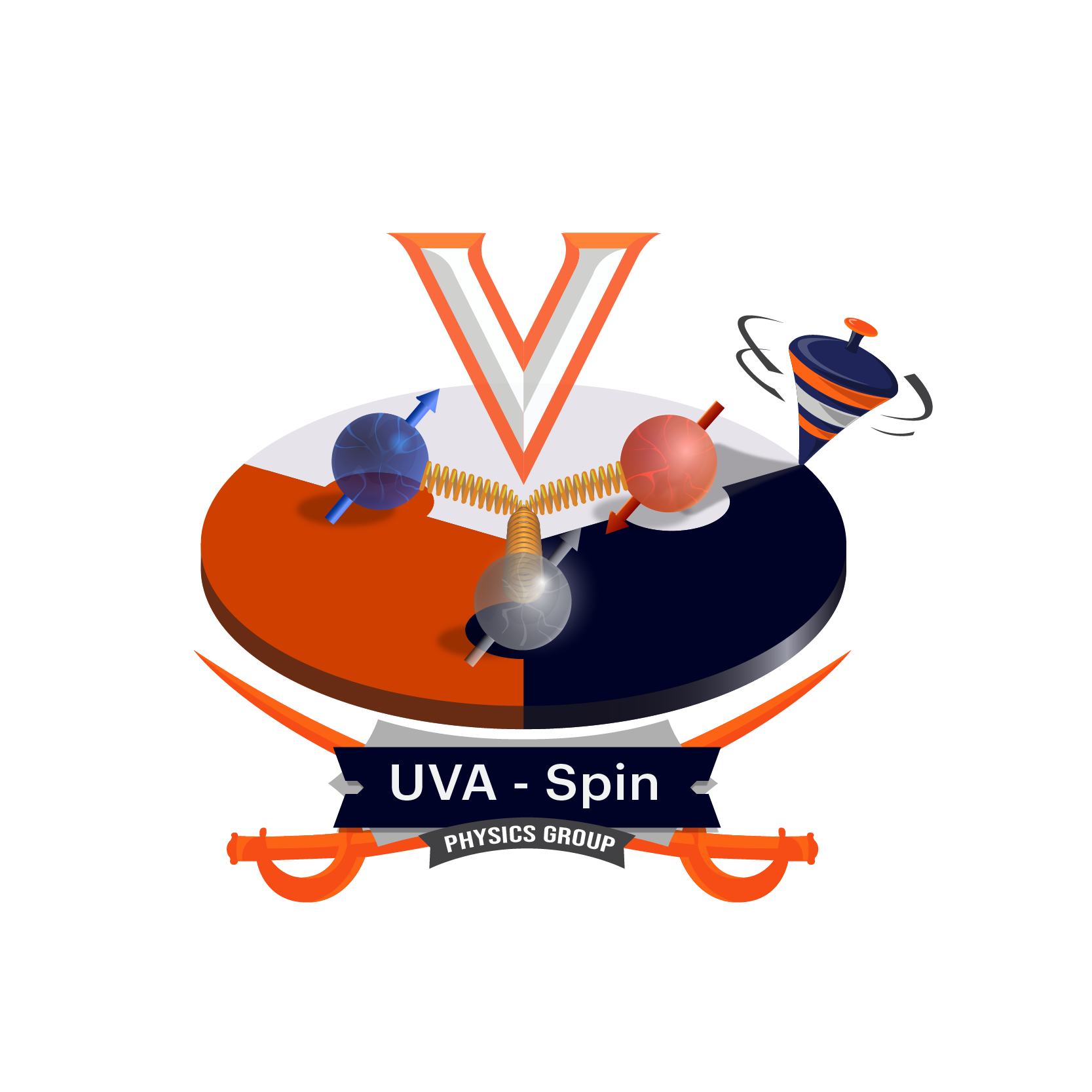UNIVERSITY OF VIRGINIA
Spin Physics Group
Our Research
The University of Virginia's Spin Physics group is at the forefront of experimental and computational phenomenology in hadronic physics, focusing on understanding the fundamental properties of partons inside nucleons—the protons and neutrons that make up atomic nuclei. Our research delves into the interactions of quarks and gluons, the building blocks of matter, which are described by Quantum Chromodynamics (QCD). While QCD provides the theoretical framework, the way quarks and gluons are confined within nucleons and mesons, and the nature of nuclear forces, remains an unsolved mystery. Through the use of quantum configured solid-state (usually polarized) materials interacting with various types of high energy beams, we explore these fundamental particles to extract new insights into their structure and behavior.
A critical aspect of our work is the computational extraction of Transverse Momentum Distributions (TMDs) and Generalized Parton Distributions (GPDs) from experimental data through the use of artificial intelligence. TMDs reveal the motion of quarks and gluons inside nucleons, offering a dynamic view of their internal interactions. GPDs provide a three-dimensional image of the nucleon, allowing us to probe its spatial structure and internal forces. Together, TMDs and GPDs help us uncover the internal dynamics of nucleons and other hadrons, advancing our understanding of their spatial configuration and how they interact at a fundamental level.
Our group stands out for its unique ability to design, develop, and maintain cryogenic polarized targets, which are essential for high-precision experiments carried out at national accelerator laboratories. Additionally, we are pioneering new extraction techniques that leverage artificial intelligence to enhance the precision and efficiency of our analyses. This integration of AI allows us to push the boundaries of traditional methods and provides a deeper understanding of hadronic structure.
In parallel, we are also engaged in quantum information science, developing Quantum Deep Neural Networks (DNNs) algorithms and simulators to study complex quantum systems and simulate quantum processes. Our low-temperature physics lab designs and builds quantum devices that operate at the kelvin to millikelvin temperatures, enabling us to explore quantum entanglement, topological materials, and the exotic behavior of particles at ultra-low temperatures. Our research integrates cutting-edge cryogenics, vacuum systems, microwave technology, and AI-driven controls to perform highly precise experiments.
Our efforts bridge multiple disciplines, from quantum information and solid-state physics to nuclear and particle physics, offering hands-on experience in experimental design, target preparation, and particle detection. By combining theoretical insights with practical experimentation, we are advancing femtographic studies that probe the internal structure of nucleons and nuclei at unprecedented resolutions. Through these efforts, we aim to deepen our understanding of the fundamental forces that bind quarks and gluons, contributing to the broader field of nuclear physics.

Learn More about the UVA Spin Physics Group
Exploring the
Future of
Spin
Physics
